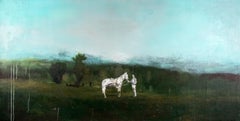Burlap Figurative Paintings
2010s Expressionist Burlap Figurative Paintings
Wood, Oil, Jute
2010s Outsider Art Burlap Figurative Paintings
Jute, Wood, Oil, Canvas
1960s Expressionist Burlap Figurative Paintings
Burlap, Oil, Canvas
1980s Romantic Burlap Figurative Paintings
Burlap, Oil
1920s Art Deco Burlap Figurative Paintings
Jute, Oil
2010s Contemporary Burlap Figurative Paintings
Jute, Oil, Acrylic, Pigment
1930s Modern Burlap Figurative Paintings
Burlap, Oil
Mid-20th Century Folk Art Burlap Figurative Paintings
Burlap, Oil
1940s Modern Burlap Figurative Paintings
Burlap, Oil
Mid-20th Century Folk Art Burlap Figurative Paintings
Burlap, Oil
2010s Contemporary Burlap Figurative Paintings
Jute, Glue, Mixed Media, Oil, Pigment
1990s Post-Impressionist Burlap Figurative Paintings
Burlap, Oil
1980s Impressionist Burlap Figurative Paintings
Oil, Jute
Early 2000s Contemporary Burlap Figurative Paintings
Jute, Oil
Early 2000s Burlap Figurative Paintings
Jute, Oil
2010s Contemporary Burlap Figurative Paintings
Jute, Glue, Mixed Media, Oil, Pigment
Early 2000s Contemporary Burlap Figurative Paintings
Jute, Oil
Mid-20th Century Folk Art Burlap Figurative Paintings
Burlap, Oil
Early 20th Century Romantic Burlap Figurative Paintings
Burlap, Oil
1970s Post-Impressionist Burlap Figurative Paintings
Oil, Burlap
Mid-20th Century Folk Art Burlap Figurative Paintings
Burlap, Oil
Early 20th Century Post-Impressionist Burlap Figurative Paintings
Jute, Oil
1970s American Modern Burlap Figurative Paintings
Burlap, Oil
1990s Abstract Burlap Figurative Paintings
Burlap, Oil
1980s American Modern Burlap Figurative Paintings
Fabric, Burlap, Wood, Oil
2010s Contemporary Burlap Figurative Paintings
Jute, Glue, Mixed Media, Oil, Pigment
Mid-20th Century Folk Art Burlap Figurative Paintings
Burlap, Oil
1980s Abstract Impressionist Burlap Figurative Paintings
Burlap, Paper, Acrylic
2010s Contemporary Burlap Figurative Paintings
Oil, Wood Panel, Jute, Wax
20th Century Burlap Figurative Paintings
Burlap, Oil
1960s Abstract Expressionist Burlap Figurative Paintings
Canvas, Oil, Jute
2010s Contemporary Burlap Figurative Paintings
Jute, Acrylic
Early 2000s Modern Burlap Figurative Paintings
Burlap, Oil
2010s Contemporary Burlap Figurative Paintings
Oil, Jute, Acrylic, Pigment
2010s Contemporary Burlap Figurative Paintings
Oil, Jute, Acrylic, Pigment
1960s Abstract Expressionist Burlap Figurative Paintings
Jute, Oil, Canvas
2010s Contemporary Burlap Figurative Paintings
Jute, Oil, Acrylic, Pigment
Early 2000s Contemporary Burlap Figurative Paintings
Jute, Oil
Early 2000s Contemporary Burlap Figurative Paintings
Jute, Oil
Early 2000s Contemporary Burlap Figurative Paintings
Jute, Oil
Early 2000s Contemporary Burlap Figurative Paintings
Jute, Oil
Early 2000s Contemporary Burlap Figurative Paintings
Jute, Oil
Early 2000s Contemporary Burlap Figurative Paintings
Jute, Oil
Early 2000s Contemporary Burlap Figurative Paintings
Jute, Oil
1980s Contemporary Burlap Figurative Paintings
Jute, Oil
Early 2000s Contemporary Burlap Figurative Paintings
Jute, Oil
Early 2000s Folk Art Burlap Figurative Paintings
Jute, Oil
Early 2000s Contemporary Burlap Figurative Paintings
Jute, Oil
Early 2000s Contemporary Burlap Figurative Paintings
Jute, Oil
Early 2000s Burlap Figurative Paintings
Jute, Oil
Early 2000s Contemporary Burlap Figurative Paintings
Jute, Oil
1980s Burlap Figurative Paintings
Jute, Oil
Early 2000s Burlap Figurative Paintings
Jute, Oil
Early 2000s Contemporary Burlap Figurative Paintings
Jute, Oil
2010s Contemporary Burlap Figurative Paintings
Oil, Pigment, Jute, Glue, Mixed Media



